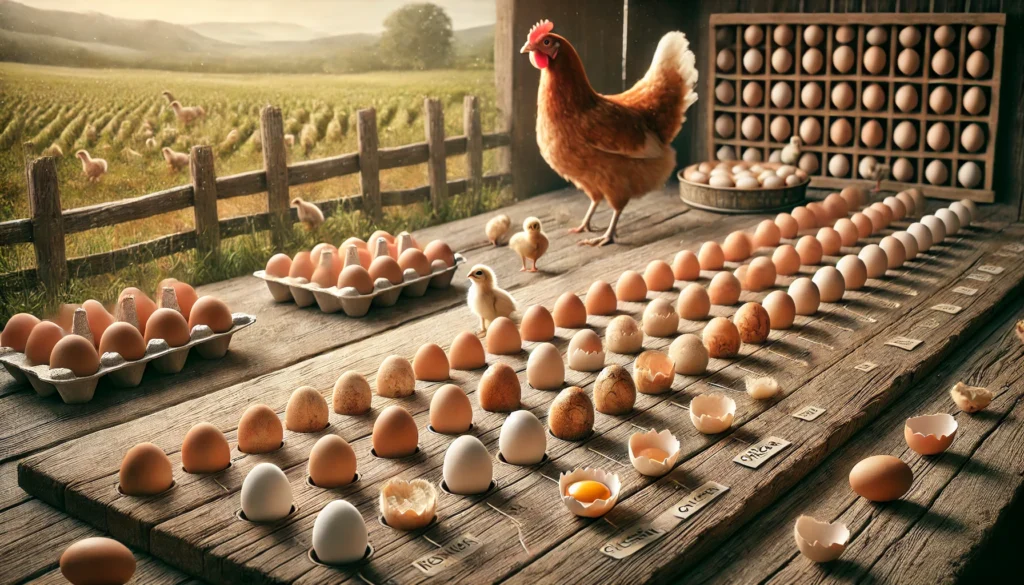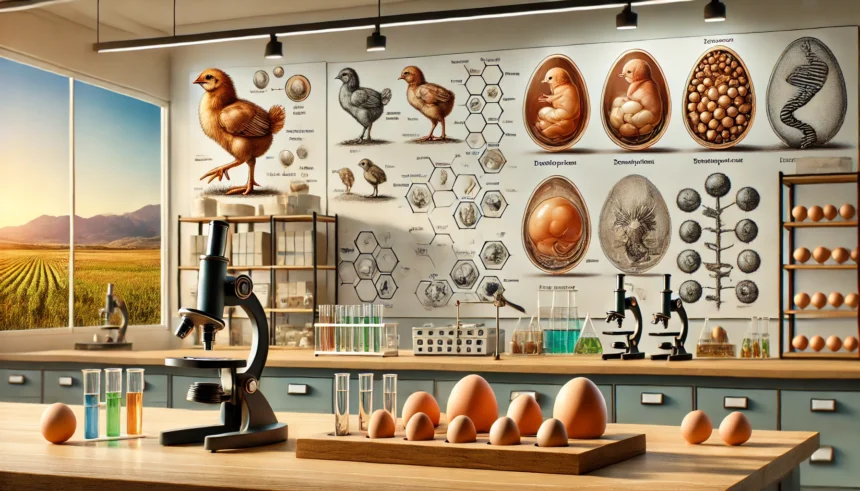Chickens are remarkable creatures, and one of their most fascinating abilities is the chiken egg deleup process. Whether you’re raising chickens or just curious about how eggs are made, understanding how a chicken’s egg forms is both interesting and important. In this article, we’ll take you through each step of the chiken egg deleup process, from the initial formation of the egg to when it is finally laid.
Oocyte Development (Egg Formation Starts)
The development of a chicken egg begins in the hen’s ovaries, where immature eggs, called oocytes, are stored. Hens are born with a set number of these oocytes, which slowly mature over time. Each oocyte grows in size, eventually becoming ready for release.
When a hen reaches the appropriate age and the environmental conditions are right, one of these oocytes matures into a follicle, which is the stage just before the egg is released. The process of maturation takes several days, and as the oocyte gets larger, it will be prepared for the next stage of development.
Ovulation: The Release of the Mature Egg
Once the oocyte has fully matured, it is released from the ovary in a process known as ovulation. The egg, now a follicle, moves into the oviduct, a long tube-like structure that carries the egg through the various stages of formation.
Ovulation typically happens once every 24 to 26 hours in a healthy hen. The released egg will then begin its journey through the oviduct, where it will be shaped and formed into a complete egg.
Formation of the Egg White (Albumen)
As the egg travels through the first section of the oviduct, called the magnum, it begins to develop its albumen, or egg white. The albumen is a thick, clear liquid that surrounds the yolk and makes up a large portion of the egg’s mass.
The albumen is made up mostly of water and proteins, which serve two important purposes: protecting the yolk and providing nutrients for the developing embryo. The egg white acts as a cushion for the yolk and helps ensure the safety of the embryo in case the egg is jostled or bumped.
Formation of the Egg Membranes
Next, the egg moves into the isthmus, the second section of the oviduct. Here, two protective membranes form around the developing egg. These membranes are critical for protecting the egg from bacteria and helping to maintain its shape as it continues to form.
The membranes act like a natural barrier, preventing harmful microorganisms from entering the egg while it’s inside the hen’s body. The membranes also help to retain the moisture and air needed for the egg’s internal development.
Shell Formation
The egg then moves into the uterus, also known as the shell gland, where it will undergo the most critical stage of its development: the formation of the shell. The shell is made primarily of calcium carbonate, which is absorbed from the hen’s diet.
This stage of egg formation takes about 20 hours. During this time, the egg shell hardens around the egg, giving it its final structure and appearance. The shell not only provides protection but also supports the egg’s internal contents, ensuring the embryo has the proper environment to grow.
The color of the egg shell—whether it’s white, brown, or even blue—depends on the breed of the hen. However, the process of shell formation remains largely the same for all chickens.
Laying the Egg
Once the shell is fully formed, the egg moves to the cloaca, the opening through which the hen expels waste and eggs. The egg is then laid, typically with the pointed end first.
A hen can lay an egg nearly every day, though it depends on the breed, age, and environmental factors. After laying an egg, the hen will begin the process of developing another egg, repeating the cycle continuously.
Incubation (if Fertilized)
If the egg is fertilized by a rooster, the egg can develop into an embryo. This requires a process called incubation. The fertilized egg must be kept at a consistent temperature for around 21 days to allow the embryo to grow.
Incubation can either be done by the hen herself, who will sit on the eggs to keep them warm, or it can be done artificially in an incubator. After 21 days of incubation, the chick will hatch, completing the life cycle.
Conclusion
The chiken egg deleup process is an intricate and fascinating sequence of events that happens almost every day in the life of a hen. From the initial formation of the egg in the ovary to the final laying of the egg, each stage is carefully designed to protect and nourish the developing egg. Whether the egg is fertilized or not, hens continue this process as part of their natural reproductive cycle.
Understanding how eggs are formed helps us appreciate the complexity behind every egg we use in cooking or even as a source of new life for future chickens. It’s a reminder of the amazing processes happening in nature every day.
Frequently Asked Questions (FAQs)
What is the chiken egg deleup process?
The chiken egg deleup process is the series of steps through which a hen’s egg develops, starting from the formation of the egg in the ovary to its final laying.
How long does the chiken egg deleup process take?
The entire chiken egg deleup process typically takes around 24 to 26 hours, from the release of the mature egg to when it is laid.
Does the chiken egg deleup process differ for fertilized eggs?
No, the chiken egg deleup process is the same for both fertilized and unfertilized eggs, but fertilized eggs require incubation to develop into embryos.
What happens during the chiken egg deleup process?
The egg passes through the ovary, oviduct, and shell gland, where the yolk, egg white, membranes, and shell form, before the egg is laid.
How often do hens undergo the chiken egg deleup process?
A healthy hen can undergo the chiken egg deleup process almost daily, producing one egg every 24-26 hours, depending on factors like age and environment.
Article Recommendations:
Bobby Gowens La Preferida – A Taste of Authentic Mexican Cuisine
How the Gutenkit Bento Box Can Simplify Your Lunch Routine
Understanding the Egg Deleup Process: What It Is and How It Works









